#helen bristol
Explore tagged Tumblr posts
Text
‘Birdcage Walk,’ by Helen Dunmore
Novel, 2017 Historical novel set in Bristol, at about the time of the French Revolution and viewing the social fall out and upheaval in British trade and family life. A book, really, which is hard to dislike, with relatable characters set in opposition to each other, and plenty of drama which – occasionally, though not overly – plays to melodrama. The types, acting and actions of the characters…
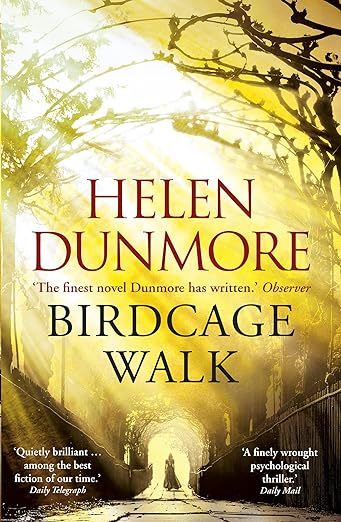
View On WordPress
0 notes
Text
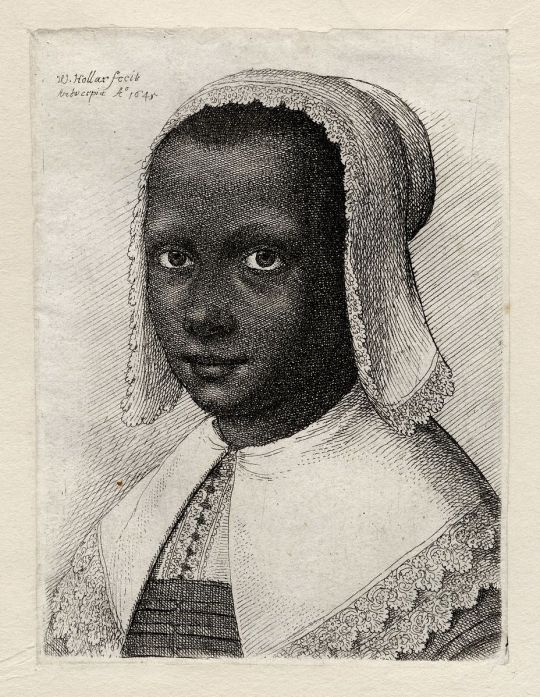
Portrait of an unidentified young woman by Wenceslaus Hollar, 1645
The reason why we should remember Cattelena, who lived in Almondsbury near Bristol, is that she is one of the few African women to have left a record in the rural Britain of the seventeenth century. All we have is the inventory of her goods at her death in 1625: a cow worth £3, a bed, a quilt, a candlestick, four pots, dishes and spoons, ‘all her wearing apparel’, a coffer and two little boxes. It amounted to £6, 9 shillings and sixpence. She was not wealthy, but she was supporting herself, with the aid of her cow and her labour. She was single, like one in five of the women of seventeenth-century England, and she appointed another woman as her executor. Her name – only a first name was given - suggests she had arrived in Bristol via Spain. That’s all we know, but it’s enough to change our picture of the English countryside.
Almondsbury is a small village close to Bristol. At the time Cattelena lived there at least another 16 Africans lived in Bristol. Just like Phylis Setterford, the way we know about Cattelena is because of the inventory of her possessions after her death. She is described as ‘Cattelena, a negra deceased of Almonsbury in the county of Gloucester, single woman & in the diocese of Bristol’. Her inventory includes cooking utensils, clothes, bedding, tablecloth, and a candlestick. However, Cattelena’s most prized possession was a cow. One cow would keep her in milk and butter, as well as provide an income through the sale of dairy products in the local area. Cattelena would have been able to graze her cow on common village land. This would provide her the opportunity of independence and self-sufficiency. Dairying was women’s work. With around 80% of people living in the countryside, it could be a serious income generator. On a farm you would have one dairymaid to six cows. Anything greater would require more servants, and a herd typically had no more than twelve cows. The best hours for milking were between 5-6am and 6-7pm. From Whitsun (May) to Michaelmas (end of September), a cow could produce a gallon of milk a day, which could be used to make a range of ‘white meats’ – meaning cheese and butter. Catellena’s cow was worth £3 10 shillings, £460.32 in today’s money. In 1625, the year Cattelena died, this would have also bought you 10 stones of wool, a quarter of wheat, and was the equivalent of 70 days of skilled labour. In Tudor times, cows were given names. Some reflected their function, as well as the owner's sense of humour. Eleanor Cumpayne of Halesowen, Worcestershire, inherited a cow named Fillpayle from her father George in 1559. Was this name an order shouted at the cow or a compliment for how productive she was? Other cow names recorded include Gentle, Brown Snout, Lovely, Motherlike, Winsome, and Welcome Home. There is no record of Cattelena’s cow having been given a name, but that doesn’t mean she wasn’t, as this wasn’t a typical thing to record in an inventory. There is no furniture in Cattelena’s inventory. This could suggest that she rented a room in someone else’s home. This could be the home of a widow named Helen Ford, who was named as administrator to Cattelena’s estate. Cattelena was unmarried but this was not unusual, with around 30% of the English adult female population single. However, it was rare for single women to live in their own home and only about 5% of single women below the age of 45 were head of their own households. Naming Helen Ford as her administrator suggests she was not living with relatives. The total of Catellena’s possessions was valued at £6 9s 6d (£851.59). The existence of Cattelena’s inventory shows us that Black Tudor women could own property themselves and live independent lives. It is significant that as a woman she owned anything at all, it indicates her relative independence. Not only was she not enslaved, but thanks to her cow she seems to have been able to support herself and was free from service or any family obligation. Imagining Cattelena, a dark skinned, independent woman, going about her day-to-day business, preparing her meals, cleaning her bedding, milking her cow, in her rural village makes us imagine English life of the past in a completely new way. She was independent, but she lived an ordinary life, much like most other Tudors.
827 notes
·
View notes
Text
Just in case. Some might enjoy. Had to organize some notes.
These are just some of the newer texts that had been promoted in the past few years at the online home of the American Association of Geographers. [At: aag dot org/new-books-for-geographers/]
Tried to narrow down selections to focus on (1) Indigenous, Black, Latin American, oceanic/archipelagic geographies; (2) imaginaries and environmental perception; (3) and mobility, borders, carceral/abolition geography.
These texts feature concepts/subjects like: Indigeneity and "geographies of time" in the Ecuadorian Andes. "Migration and music in the construction of precolonial AfroAsia." The "practice of collective escape" and "reimagining geographies of order." The "making and unmaking of French India." The "literary geography" of the rubber boom in Amazonia. "Coercive geographies" and mass imprisonment. "Anti-fatness as anti-Blackness." The "(un)governable city" of colonial Delhi.
---
New stuff, early 2024:
A Caribbean Poetics of Spirit (Hannah Regis, University of the West Indies Press, 2024)
Constructing Worlds Otherwise: Societies in Movement and Anticolonial Paths in Latin America (Raúl Zibechi and translator George Ygarza Quispe, AK Press, 2024)
Fluid Geographies: Water, Science, and Settler Colonialism in New Mexico (K. Maria D. Lane, University of Chicago Press, 2024)
Hydrofeminist Thinking With Oceans: Political and Scholarly Possibilities (Tarara Shefer, Vivienne Bozalek, and Nike Romano, Routledge, 2024)
Making the Literary-Geographical World of Sherlock Holmes: The Game Is Afoot (David McLaughlin, University of Chicago Press, 2025)
Mapping Middle-earth: Environmental and Political Narratives in J. R. R. Tolkien’s Cartographies (Anahit Behrooz, Bloomsbury Publishing, 2024)
Midlife Geographies: Changing Lifecourses across Generations, Spaces and Time (Aija Lulle, Bristol University Press, 2024)
Society Despite the State: Reimagining Geographies of Order (Anthony Ince and Geronimo Barrera de la Torre, Pluto Press, 2024)
---
New stuff, 2023:
The Black Geographic: Praxis, Resistance, Futurity (Camilla Hawthorne and Jovan Scott Lewis, Duke University Press, 2023)
Activist Feminist Geographies (Edited by Kate Boyer, Latoya Eaves and Jennifer Fluri, Bristol University Press, 2023)
The Silences of Dispossession: Agrarian Change and Indigenous Politics in Argentina (Mercedes Biocca, Pluto Press, 2023)
The Sovereign Trickster: Death and Laughter in the Age of Dueterte (Vicente L. Rafael, Duke University Press, 2022)
Ottoman Passports: Security and Geographic Mobility, 1876-1908 (İlkay Yılmaz, Syracuse University Press, 2023)
The Practice of Collective Escape (Helen Traill, Bristol University Press, 2023)
Maps of Sorrow: Migration and Music in the Construction of Precolonial AfroAsia (Sumangala Damodaran and Ari Sitas, Columbia University Press, 2023)
---
New stuff, late 2022:
B.H. Roberts, Moral Geography, and the Making of a Modern Racist (Clyde R. Forsberg, Jr.and Phillip Gordon Mackintosh, Cambridge Scholars Publishing, 2022)
Environing Empire: Nature, Infrastructure and the Making of German Southwest Africa (Martin Kalb, Berghahn Books, 2022)
Sentient Ecologies: Xenophobic Imaginaries of Landscape (Edited by Alexandra Coțofană and Hikmet Kuran, Berghahn Books 2022)
Colonial Geography: Race and Space in German East Africa, 1884–1905 (Matthew Unangst, University of Toronto Press, 2022)
The Geographies of African American Short Fiction (Kenton Rambsy, University of Mississippi Press, 2022)
Knowing Manchuria: Environments, the Senses, and Natural Knowledge on an Asian Borderland (Ruth Rogaski, University of Chicago Press, 2022)
Punishing Places: The Geography of Mass Imprisonment (Jessica T. Simes, University of California Press, 2021)
---
New stuff, early 2022:
Belly of the Beast: The Politics of Anti-fatness as Anti-Blackness (Da’Shaun Harrison, 2021)
Coercive Geographies: Historicizing Mobility, Labor and Confinement (Edited by Johan Heinsen, Martin Bak Jørgensen, and Martin Ottovay Jørgensen, Haymarket Books, 2021)
Confederate Exodus: Social and Environmental Forces in the Migration of U.S. Southerners to Brazil (Alan Marcus, University of Nebraska Press, 2021)
Decolonial Feminisms, Power and Place (Palgrave, 2021)
Krakow: An Ecobiography (Edited by Adam Izdebski & Rafał Szmytka, University of Pittsburgh Press, 2021)
Open Hand, Closed Fist: Practices of Undocumented Organizing in a Hostile State (Kathryn Abrams, University of California Press, 2022)
Unsettling Utopia: The Making and Unmaking of French India (Jessica Namakkal, 2021)
---
New stuff, 2020 and 2021:
Mapping the Amazon: Literary Geography after the Rubber Boom (Amanda Smith, Liverpool University Press, 2021)
Geopolitics, Culture, and the Scientific Imaginary in Latin America (Edited by María del Pilar Blanco and Joanna Page, 2020)
Reconstructing public housing: Liverpool’s hidden history of collective alternatives (Matt Thompson, University of Liverpool Press, 2020)
The (Un)governable City: Productive Failure in the Making of Colonial Delhi, 1858–1911 (Raghav Kishore, 2020)
Multispecies Households in the Saian Mountains: Ecology at the Russia-Mongolia Border (Edited by Alex Oehler and Anna Varfolomeeva, 2020)
Urban Mountain Beings: History, Indigeneity, and Geographies of Time in Quito, Ecuador (Kathleen S. Fine-Dare, 2019)
City of Refuge: Slavery and Petit Marronage in the Great Dismal Swamp, 1763-1856 (Marcus P. Nevius, University of Georgia Press, 2020)
#abolition#ecology#multispecies#landscape#tidalectics#indigenous#ecologies#archipelagic thinking#opacity and fugitivity#geographic imaginaries#caribbean#carceral geography#intimacies of four continents#reading list#reading recommendations#book recommendations#my writing i guess#indigenous pedagogies#black methodologies
72 notes
·
View notes
Text
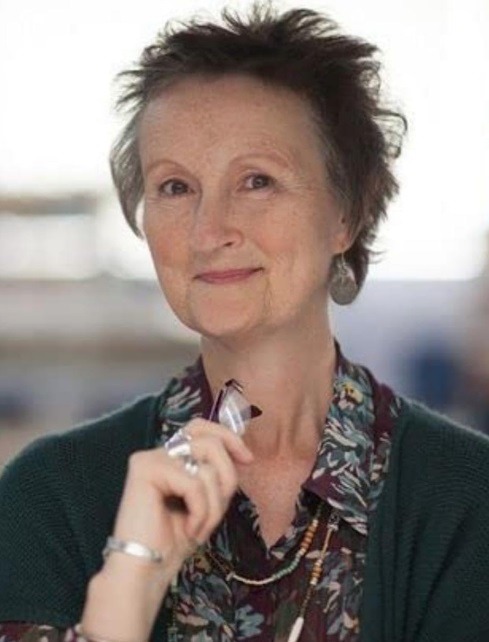
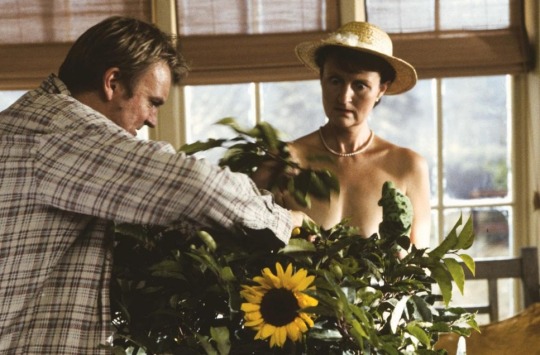
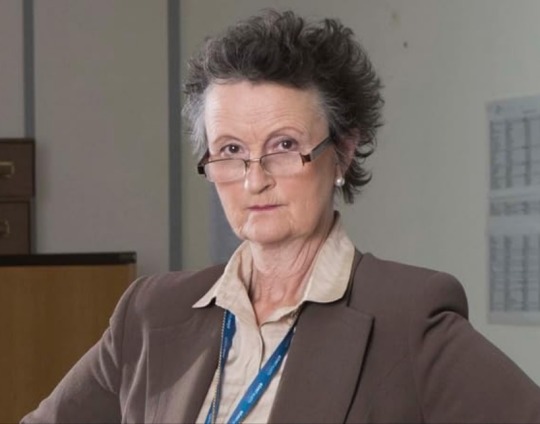

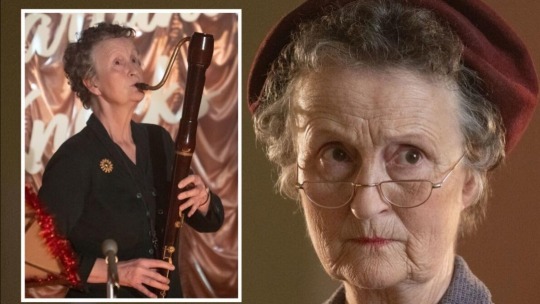
Happy Birthday Scottish actress Georgie Glen.
Georgie was born in Helensburgh on April 20th 1956 and as a child had little interest in appearing in school plays. She studied graphic design at Glasgow School of Art and moved to London in her mid-twenties to design book covers for the Thames and Hudson publishing house.
Looking for other interests she joined Floodlight Council, an organization set up to bring out adult’s artistic skills and then became part of the Questors Theatre Company in Ealing, West London. Here she met the late Alan Rickman - who, like Georgie, had a background in design before treading the boards - and he encouraged her to follow her acting ambitions. As a result she enrolled at the Bristol Old Vic drama school and on graduating had her first job at the Wolsey Theatre in Ipswich.
Even then she felt, somewhat modestly, that she did not have the looks for a leading lady but ever since her television debut in 1988 she has been a reliable supporting player in virtually every type of show from sketch comedy to period drama, notably in a recurring role as doughty Sergeant Jennifer Nokes in Heartbeat and the liberal, kindly teacher head of History, Audrey in'Waterloo Road - filmed in her native Scotland.
Indeed she may be said to be one of the first ladies of character acting and though her film roles have again always been in support of bigger names she has proved herself to be a scene- stealer par excellence, as one of the more enthusiastic in Calendar girls alongside Helen Mirren and Julie Walters.
As I said earlier she has been in every type of show, to name a few we have comedy roles in Harry Enfield and Friends, Alas Smith & Jones and Little Britain, drama series and films are two many to mention them all but there are dozens, the pick of them include Taggart, of course, Peak Practice, Doctor Findlay, Mrs Brown, Shakespeare in Love, Silent Witness, and I think a lot of you will maybe “say” oh yes, when I tell you that she was the Judge in The Victim in 2019, an excellent four part series set in Scotland also starring John Hannah and Kelly McDonald, and she was Denise in the brilliant Channel four show Damned!
23 notes
·
View notes
Text
This makes me happy, but also sad because I’m not going to be able to go see Attaboy in Asheville like planned. I envy anyone who does get to see them perform, so please tell the band I love them and maybe come to Bristol, TN sometime soon.
Anyone want my ticket? All I want is what I paid for it ($27), and for you to have a good time for me.
A number of factors are keeping me away: 1.) any roads I’d usually travel are impassible and closed indefinitely, and I’d have to go 4 hours out of my way to even try; and 2.) the person I was going to stay with had a tree fall on her house during Hurricane Helene and I really can’t afford a hotel room by myself right now.
8 notes
·
View notes
Text
I've been reading the Harvard book of Contemporary American Poetry (outdated now; published in 1985) and I keep going back to these few paragraphs from Helen Vendler's introduction—which is a very, very good introduction—
In a late poem, called simply "Poem," Elizabeth Bishop traces the stages by which we enter a work of art (in this case, an unremarkable painting by her great-uncle). First, we regard it idly, with indifference. Next, we recognize some generic feature of its content (Bishop decides that the scene resembles her childhood Nova Scotia) or some process in its making ("fresh-squiggled from the tube"), but we remain observers outside the scene. Then, insensibly, we begin to enter the work: "The air is fresh and cold; cold early spring." And we are rewarded for our imaginative participation by a sudden moment of recognition, as some detail strikes us as pertaining directly to ourselves: "Heavens, I recognize this place, I know it!" After that, our responses may continue to be sometimes technical ("titanium white, one dab") sometimes visual ("the hint of steeple"), but they will also contain the personal, the moral, the ratified ("the little of our earthly trust. Not much."). At the end, we regret having to leave the scene—"the yet-to-be-dismantled elms"—but even as we take our leave the work seems, because we have entered and recognized it, perpetually ours, vividly alive: Life and the memory of it cramped, dim, on a piece of Bristol board, dim, but how live, how touching in detail —the little that we get for free, the little of our earthly trust. Not much. About the size of our abidance along with theirs: the munching cows, the iris, crisp and shivering, the water still standing from spring freshets, the yet-to-be-dismantled elm, the geese. No one can rise to the occasion in every encounter with a poem: but I trust that readers of this book will find among these poems many that will provoke that sharp and relieving pang—"Heavens, I recognize this place, I know it!"
#sorry for the wall of text. yikes#¶#gendzl reads#The Harvard book of Contemporary American Poetry edited by Helen Vendler
59 notes
·
View notes
Text

"The reason why we should remember Cattelena, who lived in #Almondsbury near Bristol, is that she is one of the few African women to have left a record in the rural Britain of the seventeenth century. All we have is the inventory of her goods at her death in 1625: a cow worth £3, a bed, a quilt, a candlestick, four pots, dishes and spoons, ‘all her wearing apparel’, a coffer and two little boxes. It amounted to £6, 9 shillings and sixpence. She was not wealthy, but she was supporting herself, with the aid of her cow and her labour. She was single, like one in five of the women of seventeenth-century England, and she appointed another woman as her executor. Her name – only a first name was given - suggests she had arrived in Bristol via Spain. That’s all we know, but it’s enough to change our picture of the English countryside.
"Almondsbury is a small village close to Bristol. At the time Cattelena lived there at least another 16 Africans lived in Bristol. Just like Phylis Setterford, the way we know about Cattelena is because of the inventory of her possessions after her death.
"She is described as ‘Cattelena, a negra deceased of Almonsbury in the county of Gloucester, single woman & in the diocese of Bristol’. Her inventory includes cooking utensils, clothes, bedding, tablecloth, and a candlestick. However, Cattelena’s most prized possession was a cow.
"One cow would keep her in milk and butter, as well as provide an income through the sale of dairy products in the local area. Cattelena would have been able to graze her cow on common village land. This would provide her the opportunity of independence and self-sufficiency.
"Dairying was women’s work. With around 80% of people living in the countryside, it could be a serious income generator. On a farm you would have one dairymaid to six cows. Anything greater would require more servants, and a herd typically had no more than twelve cows. The best hours for milking were between 5-6am and 6-7pm. From Whitsun (May) to Michaelmas (end of September), a cow could produce a gallon of milk a day, which could be used to make a range of ‘white meats’ – meaning cheese and butter. Catellena’s cow was worth £3 10 shillings, £460.32 in today’s money. In 1625, the year Cattelena died, this would have also bought you 10 stones of wool, a quarter of wheat, and was the equivalent of 70 days of skilled labour.
"In Tudor times, cows were given names. Some reflected their function, as well as the owner's sense of humour. Eleanor Cumpayne of Halesowen, Worcestershire, inherited a cow named Fillpayle from her father George in 1559. Was this name an order shouted at the cow or a compliment for how productive she was? Other cow names recorded include Gentle, Brown Snout, Lovely, Motherlike, Winsome, and Welcome Home. There is no record of Cattelena’s cow having been given a name, but that doesn’t mean she wasn’t, as this wasn’t a typical thing to record in an inventory.
"There is no furniture in Cattelena’s inventory. This could suggest that she rented a room in someone else’s home. This could be the home of a widow named Helen Ford, who was named as administrator to Cattelena’s estate. Cattelena was unmarried but this was not unusual, with around 30% of the English adult female population single. However, it was rare for single women to live in their own home and only about 5% of single women below the age of 45 were head of their own households. Naming Helen Ford as her administrator suggests she was not living with relatives.
"The total of Catellena’s possessions was valued at £6 9s 6d (£851.59). The existence of Cattelena’s inventory shows us that Black Tudor women could own property themselves and live independent lives. It is significant that as a woman she owned anything at all, it indicates her relative independence. Not only was she not enslaved, but thanks to her cow she seems to have been able to support herself and was free from service or any family obligation. Imagining Cattelena, a dark skinned, independent woman, going about her day-to-day business, preparing her meals, cleaning her bedding, milking her cow, in her rural village makes us imagine English life of the past in a completely new way. She was independent, but she lived an ordinary life, much like most other Tudors.
"#blacktudorwomen#womenshistory#Catellena#womeninworldhistory#fyp"
h/t Women In World History
11 notes
·
View notes
Text
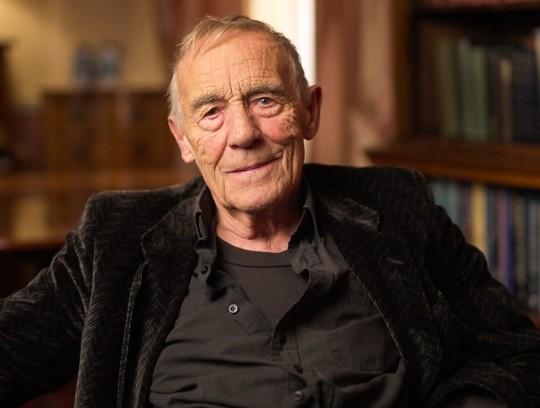
The actor Michael Jayston, who has died aged 88, was a distinguished performer on stage and screen. The roles that made his name were as the doomed Tsar Nicholas II of Russia in Franklin Schaffner’s sumptuous account of the last days of the Romanovs in Nicholas and Alexandra (1971), and as Alec Guinness’s intelligence minder in John Le Carré’s Tinker Tailor Soldier Spy on television in 1979. He never made a song and dance about himself and perhaps as a consequence was not launched in Hollywood, as were many of his contemporaries.
Before these two parts, he had already played a key role in The Power Game on television and Henry Ireton, Cromwell’s son-in-law, in Ken Hughes’s fine Cromwell (1969), with Richard Harris in the title role and Guinness as King Charles I. And this followed five years with the Royal Shakespeare Company including a trip to Broadway in Harold Pinter’s The Homecoming, in which he replaced Michael Bryant as Teddy, the brother who returns to the US and leaves his wife in London to “take care of” his father and siblings.
Jayston, who was not flamboyantly good-looking but clearly and solidly attractive, with a steely, no-nonsense, demeanour and a steady, piercing gaze, could “do” the Pinter menace as well as anyone, and that cast – who also made the 1973 movie directed by Peter Hall – included Pinter’s then wife, Vivien Merchant, as well as Paul Rogers and Ian Holm.
Jayston had found a replacement family in the theatre. Born Michael James in Nottingham, he was the only child of Myfanwy (nee Llewelyn) and Vincent; his father died of pneumonia, following a serious accident on the rugby field, when Michael was one, and his mother died when he was a barely a teenager. He was then brought up by his grandmother and an uncle, and found himself involved in amateur theatre while doing national service in the army; he directed a production of The Happiest Days of Your Life.
He continued in amateur theatre while working for two years as a trainee accountant for the National Coal Board and in Nottingham fish market, before winning a scholarship, aged 23, to the Guildhall School of Music and Drama in London, where he was five years older than everyone else on his course. He played in rep in Bangor, Northern Ireland, and at the Salisbury Playhouse before joining the Bristol Old Vic for two seasons in 1963.
At the RSC from 1965, he enjoyed good roles – Oswald in Ghosts, Bertram in All’s Well That Ends Well, Laertes to David Warner’s Hamlet – and was Demetrius in Hall’s film of A Midsummer Night’s Dream (1968), with Warner as Lysander in a romantic foursome with Diana Rigg and Helen Mirren.
But his RSC associate status did not translate itself into the stardom of, say, Alan Howard, Warner, Judi Dench, Ian Richardson and others at the time. He was never fazed or underrated in this company, but his career proceeded in a somewhat nebulous fashion, and Nicholas and Alexandra, for all its success and ballyhoo, did not bring him offers from the US.
Instead, he played Charles Lutwidge Dodgson (Lewis Carroll) in Alice’s Adventures in Wonderland (1972), a so-so British musical film version with music and lyrics by John Barry and Don Black, with Michael Crawford as the White Rabbit and Peter Sellers the March Hare. In 1979 he was a colonel in Zulu Dawn, a historically explanatory prequel to the earlier smash hit Zulu.
As an actor he seemed not to be a glory-hunter. Instead, in the 1980s, he turned in stylish and well-received leading performances in Noël Coward’s Private Lives, at the Duchess, opposite Maria Aitken (1980); as Captain von Trapp in the first major London revival of The Sound of Music at the Apollo Victoria in 1981, opposite Petula Clark; and, best of all, as Mirabell, often a thankless role, in William Gaskill’s superb 1984 revival, at Chichester and the Haymarket, of The Way of the World, by William Congreve, opposite Maggie Smith as Millamant.
Nor was he averse to taking over the leading roles in plays such as Peter Shaffer’s Equus (1973) or Brian Friel’s Dancing at Lughnasa (1992), roles first occupied in London by Alec McCowen. He rejoined the National Theatre – he had been Gratiano with Laurence Olivier and Joan Plowright in The Merchant of Venice directed by Jonathan Miller in 1974 – to play a delightful Home Counties Ratty in the return of Alan Bennett’s blissful, Edwardian The Wind in the Willows in 1994.
On television, he was a favourite side-kick of David Jason in 13 episodes of David Nobbs’s A Bit of a Do (1989) – as the solicitor Neville Badger in a series of social functions and parties across West Yorkshire – and in four episodes of The Darling Buds of May (1992) as Ernest Bristow, the brewery owner. He appeared again with Jason in a 1996 episode of Only Fools and Horses.
He figured for the first time on fan sites when he appeared in the 1986 Doctor Who season The Trial of a Time Lord as Valeyard, the prosecuting counsel. In the new millennium he passed through both EastEnders and Coronation Street before bolstering the most lurid storyline of all in Emmerdale (2007-08): he was Donald de Souza, an unpleasant old cove who fell out with his family and invited his disaffected wife to push him off a cliff on the moors in his wheelchair, but died later of a heart attack.
By now living on the south coast, Jayston gravitated easily towards Chichester as a crusty old colonel – married to Wendy Craig – in Coward’s engaging early play Easy Virtue, in 1999, and, three years later, in 2002, as a hectored husband, called Hector, to Patricia Routledge’s dotty duchess in Timberlake Wertenbaker’s translation of Jean Anouilh’s Léocadia under the title Wild Orchids.
And then, in 2007, he exuded a tough spirituality as a confessor to David Suchet’s pragmatic pope-maker in The Last Confession, an old-fashioned but gripping Vatican thriller of financial and political finagling told in flashback. Roger Crane’s play transferred from Chichester to the Haymarket and toured abroad with a fine panoply of senior British actors, Jayston included.
After another collaboration with Jason, and Warner, in the television movie Albert’s Memorial (2009), a touching tale of old war-time buddies making sure one of them is buried on the German soil where first they met, and a theatre tour in Ronald Harwood’s musicians-in-retirement Quartet in 2010 with Susannah York, Gwen Taylor and Timothy West, he made occasional television appearances in Midsomer Murders, Doctors and Casualty. Last year he provided an introduction to a re-run of Tinker Tailor on BBC Four. He seemed always to be busy, available for all seasons.
As a keen cricketer (he also played darts and chess), Jayston was a member of the MCC and the Lord’s Taverners. After moving to Brighton, he became a member of Sussex county cricket club and played for Rottingdean, where he was also president.
His first two marriages – to the actor Lynn Farleigh in 1965 and the glass engraver Heather Sneddon in 1970 – ended in divorce. From his second marriage he had two sons, Tom and Ben, and a daughter, Li-an. In 1979 he married Ann Smithson, a nurse, and they had a son, Richard, and daughter, Katie.
🔔 Michael Jayston (Michael James), actor, born 29 October 1935; died 5 February 2024
Daily inspiration. Discover more photos at Just for Books…?
13 notes
·
View notes
Note
Hey there🌱 I have more asks, for April + her parents this time, if you feel comfortable with answering them: Where are her parents from? Where did April grow up? And does she have any siblings?
♡
April smiles warmly, her golden eyes bright as she begins to answer.
“Oh, I love this! Let’s see… My dad, Oliver, is originally from a small village in Devon, England—pure countryside, rolling hills, and everything. My mum, Helen, is from London. They’re quite the opposites, aren’t they? But somehow, they made it work!”
She pauses, her tone softening slightly as she recalls her childhood.
“I grew up in a little village not too far from Bristol. It was quiet, peaceful, and full of green spaces. Perfect for daydreaming and reading outside. I used to love wandering around the fields, imagining I was off on some grand adventure. And when Hogwarts finally sent my letter? It felt like one of those adventures had come to life.”
April hesitates for a moment before shaking her head gently.
“I don’t have any siblings. It’s just me. Mum and Dad were always enough, though. They’re the kind of parents who made me feel loved no matter what. And, well, now I have Poppy and Evangeline, so my family feels plenty big these days.”
She chuckles softly, looking content.
“Tell Karajluce I loved these questions, and I hope that answers them!”
┈┉✱┈┉✱┈┉✱┈┉✱┈┉✱┈┉✱┈┉✱
April’s expression softens into a warm smile.
“That’s really lovely to hear, Lynn. Please tell Karajluce I’m so grateful for their curiosity and their kindness. It means a lot to me—and to the Miller family too. I don’t mind sharing pieces of my life if it brings someone a little joy.”
She glances over at a nearby photo of her parents, smiling fondly.
“I think Mum and Dad would appreciate that someone cares so much about our story. And of course, Poppy and Evangeline love hearing about it, too.”
April leans back, still smiling.
“Tell them thank you from the bottom of my heart, and that I’d be happy to answer any more questions they have.”
4 notes
·
View notes
Text
All Identity V references (or easter eggs) to popular culture found.
Some are taken from theories of fandom others are found by me.
Martha Remington as the surname taken from the typewriter brand "remington" (also curious beacause in the game you have to decode typewriters)
Doctor, Emily Dyer is inspired by Amelia Dyer a british serial killer who killed lots of young children while beyond her cares.
Helena Adams references to Helen keller, a blind def woman who were a full-time activist.
Priestress (Fiona Gilman) references to HP Lovecraft's story "The dream in the witch's house."
The Magician references to Servais le roy, the creator of the illusion technic of levitation.
Naib Subedar, in his backstory makes reference to the british invasion of india.
Thief, Kreacher Pierson references George Müller, a Christian evangelist and the director of the Ashley Down orphanage in Bristol, England. He was one of the founders of the Plymouth Brethren movement. His surname is named after Arthur Tappan Pierson, a friend of George Müller who wrote his biography.
The explorer references to Gulliver's Travels.
William Ellis references William Webb Ellis, the alleged inventor of rugby. He also shares the exact same name as him
Norton Campbell's background story references the author H.P Lovecraft's short story titled The Transition of Juan Romero.
Enchantress, Patricia Dorval's adoptive mother references Marie Laveau a Louisiana Creole practitioner of Vodou, herbalist and midwife who was renowned in New Orleans.
Wilding, Murro's Deductions mentions Kasper Hauser, a German youth who claimed to have grown up in the total isolation of a darkened cell.
Female Dancer, Margaretha Zelle references both Mata Hari, a Dutch exotic dancer and courtesan who was convicted of being a spy for Germany during World War I and Natalia from The Last Circus.
Acrobat, Mike Morton's appearance references both Arlecchino from Commedia dell'arte and Vander Clyde Broadway an American female impersonator, high-wire performer, and trapeze artist born in Texas.
"Prisoner", Luca Balsa references Nikola Tesla a Serbian-American inventor, electrical engineer, mechanical engineer, and futurist best known for his contributions to the design of the modern alternating current (AC) electricity supply system.
Entomologist, Melly Plinius references Pliny the Elder (Gaius Plinius Secundus) the Roman author/naturalist/natural philosopher.
Batter, Ganji Gupta's background story references the British Colonization of Indian Subcontinent (1858-1947).
"Psychologist", Ada Mesmer's Surname references Franz Anton Mesmer, a German physician who developed the theory of animal magnetism. She may also be inspired in Ada Lovelace the matematician
Soul Weaver, Violetta references Aloisia 'Violetta' Wagner, a famous German freak show performer from the early 20th century. She was renowned for having tetra-amelia syndrome.
The Ripper, Jack references Jack the Ripper an unidentified serial killer active in the impoverished districts in and around Whitechapel in the East End of London in 1888. His background story references Walter Sickert, a German-born British painter and print maker who was a member of the Camden Town Group of Post-Impressionist artists in early 20th-century London and was suspected of being Jack the Ripper.
Geisha, Michiko references Chōchō-San from Madame Butterfly. She may also reference Yosano Akiko or Higuchi Ichiyo, both famous writers and geishas. But not only, she may reference the play of Fukuchi Ochi "Mirror Lion" .
Hastur is based on The King in Yellow from H.P. Lovecraft novels (Cthulhu Mythos Franchise).
Wu Chang, Xie Bi'an and Fan Wujiu references Heibai Wuchang (黑白无常, Black and White Impermanence) the two Deities in Chinese folk religion in charge of escorting the spirits of the dead to the underworld.
Photographer, Joseph Desaulniers references both Nicéphore Niépce a French inventor, usually credited as the inventor of photography and a pioneer in that field and Dorian Gray from The Picture of Dorian Gray. His background story also mentions the French Revolution.
Mad Eyes, Burke Lapadura references Edmund Burke, a highly regarded Canadian architect best known for building Toronto's Prince Edward Viaduct or "Bloor Street Viaduct" and Toronto's Robert Simpson store.
Dream Witch, Yidhra references Yidhra from the H.P. Lovecraft novels (Cthulhu Mythos Franchise).
Bloody Queen, Mary references both Marie Antoinette the last queen of France and a controversal figure during the French Revolution and the abilities based on Bloody Mary.
"Disciple", Ann's background story references the Salem witch trials.
Violinist, Antonio references Niccolò Paganini an Italian violinist and composer. He was the most celebrated violin virtuoso of his time, and left his mark as one of the pillars of modern violin technique.
Sculptor, Galatea Claude possibly references Camille Claudel a French sculptor known for her figurative works in bronze and marble and her name references to the statue carved of ivory by Pygmalion of Cyprus of the same name from Greek Mythology.
"Undead", Percy references Victor Frankenstein from the author Mary Shelley's novel Frankenstein.
The Breaking Wheel, Will Brothers references the Breaking wheel with their trailer also referencing the Execution of St Catherine.
Naiad, Grace references Naiads, fresh water nymphs presiding over fountains, wells, springs, streams, brooks and other bodies of fresh water from Greek Mythology. She also appears to reference H.P. Lovecraft's novella The Shadow Over Innsmouth.
Wax Artist, Philippe is based on Philippe Curtius a Swiss physician and wax modeller who taught Marie Tussaud the art of wax modelling.
Hermit, Alva Lorenz references Thomas Edison, a famous inventor.
Night Watch, Ithaqua is based on Ithaqua from H.P. Lovecraft novels (Cthulhu Mythos Franchise).
"Big Daddy" is likely a reference to "Big Brother" from 1984 by George Orwell, the leader who keeps all citizens under constant surveillance and controls them.
Allen, while little is currently known about him, is likely based off Zadok Allen from The Shadow Over Innsmouth.
Andrea may be based on Antonia Bianchi, a singer and the long term lover of Niccolo Paganini.
Arthur Byers is likely based on Ambrose Bierce, the author of “Haïta the Shepherd” in which Hastur first appeared.[1]
Catherine is based on St. Catherine of Alexandria who was executed using a breaking wheel.
Christina's death scene in Philipe's character trailer is an allusion to The Death of Marat by French painter Jacques-Louis David.
Claude Desaulniers is based on Claude Niépce, the older brother of French inventor Nicéphore Niépce.
Damballa is based on the benevolent spiritual intermediary in Haitian Voodoo of the same name.
James Reichenbach's last name is a reference to Reichenbach Falls, the name of the location where Arthur Conan Doyle's character Sherlock Holmes had his fight to the death with his greatest foe Professor Moriarty.
James Whistler is based on the real life painter James Abbott McNeill Whistler who was the mentor of Walter Sickert.
Papa Legba is based on trickster spiritual intermediary in Haitian Vodou of the same name.
Princess Lamballe is based on Marie Thérèse Louise of Savoy (Princesse de Lamballe) who was one of Marie Antoinette's closest friends.
Robert is likely based off Robert Olmstead, the main character and narrator of The Shadow Over Innsmouth.
Sullivan is based on Anne Sullivan Macy, an American teacher and lifelong friend of Helen Keller.
The currently Unnamed Cat God is likely based on the short stories Nyarlathotep and Cats of Ulthar by H.P. Lovecraft.
Blue Aladdin references to Aladdin from Aladdin and the Wonderful Lamp.
Violet Peacock's Chinese description references to The Peacocks Fly Southeast.
Both Poseidon's Crown and Poseidon references to Poseidon the god of the sea, storms, earthquakes and horses from Greek Mythology.
Caged Butterfly's description mentions Madame Butterfly.
The 1st Essence of Season 2 is based on several Fairy Tale Stories on each Costumes.
King's Tailor references to one of the Swindler from The Emperor's New Clothes.
Both Lazy Mr. Bunny and Mr. Turtle references to The Hare and The Tortoise from The Tortoise and the Hare.
King Arthur references to the character of the same name
Merlin references to the character of the same name.
Black Swan is based on Odile (The Black Swan) from Swan Lake.
Anubis is based on the god of the same name who is the god of death, mummification, embalming, the afterlife, cemeteries, tombs, and the Underworld in Egyptian Mythology.
Ancient Soul references to the Ankh an ancient Egyptian hieroglyphic symbol used in Egyptian art and writing to represent the word for "life" and, by extension, as a symbol of life itself.
Soul Catcher references to Day of the Dead a holiday traditionally celebrated on November 1 and 2, though other days, such as October 31 or November 6 from Mexica.
Golden Touch is based on King Midas a king of Phrygia who is known to turn everything he touched into gold from Greek Mythology.
The 1st Essence of Season 6 has several references to Greek Mythology.
Icarus is named after and based on the hero of the same name who is the son of the master craftsman Daedalus, the creator of the Labyrinth on Greek Mythology.
Apollo is named after and based on the God of the same name who is the god of oracles, healing, archery, music and arts, sunlight, knowledge, herds and flocks, protection of the young and the Member of Twelve Olympians.
Leonidas is named after Leonidas I a king of the Greek city-state of Sparta.
Pam possibly is based on Pan the god of the wild, shepherds and flocks, rustic music and impromptus, and companion of the nymphs.
Captain Hook is based on Captain James Hook.
Eversleeping Girl is based on Wendy Darling.
Forgotten Boy is possibly based on Peter Pan or one of the Lost Boys.
Siren is possibly based on the Mermaids from Mermaids' Lagoon.
March Hare is based on the Character of the Same Name.
Alice is based on the Protagonist of the Same Name.
Mr. Bunny is based on The White Rabbit.
Bill is based on Bill The Lizard.
Caterpillar is based on Hookah-Smoking Caterpillar.
Knave of Hearts is based on the character of the same name.
Executioner is based on one of the Queen of Hearts' Card Soldiers.
The Mad Hatter is based on the character of the same name.
Queen of Hearts is based on the character of the same name.
Serpent is based on Quetzalcoatl the god of life, light and wisdom, lord of the day and the winds from Aztec Mythology.
Lady Thirteen is based on Yu Mo from The Flowers of War, portrayed by the actress Ni Ni.
Sophia is based on Sophia Palaiologina a Byzantine princess, member of the Imperial Palaiologos family, Grand Princess of Moscow as the second wife of Grand Prince Ivan III.
Ivan is possibly based on Ivan III of Russia a Grand Prince of Moscow and Grand Prince of all Rus'.
Maroon Crystal is based on Dorothy Gale.
Princess Ozma is based on the character of the same name.
The Wicked Witch is based on both Wicked Witch of the West and Dorothy Gale.
Emerald City Coachman is based on the Coachman.
Oz, the Wizard is based on Wizard of Oz.
The Tin Man is based on Tin Woodman.
The Spookcrow is based on Scarecrow.
The Toothless Lion is based on Cowardly Lion.
Golden Ratio references to the Philosopher's Stone a mythic alchemical substance capable of turning base metals such as mercury into gold.
Electrolysis references to the technique of the same name that uses direct electric current (DC) to drive an otherwise non-spontaneous chemical reaction.
Ouroboros references to the ancient symbol of the same name that depicts a snake or dragon eating it's own tail.
Choir Boy has a The squared circle symbol an alchemical symbol (17th century) illustrating the interplay of the four elements of matter symbolising the philosopher's stone on his back.
Mutation represents Chrysopoeia an artificial production of gold, most commonly by the alleged transmutation of base metals such as lead.
Sulfuric Acid has a tattoo on chest resembling the symbol of the same name based on Dalton's Law of Atomic Weights.
Vine references to the Elixir of life a potion that supposedly grants the drinker eternal life and/or eternal youth.
Philofelist possibly references to Necromancy a practice of magic or black magic involving communication with the dead – either by summoning their spirits as apparitions, visions or raising them bodily – for the purpose of divination, imparting the means to foretell future events, discover hidden knowledge, to bring someone back from the dead, or to use the dead as a weapon.
Judge represents Pride.
Deputy represents Greed.
Clerk represents Envy.
Court 3 Commissioner represents Wrath.
Court 5 Commissioner represents Sloth.
Court 6 Commissioner represents Gluttony.
Court 7 Commissioner represents Lust.
Narcissus is named after the character of the same name who rejected all romantic advances, eventually falling in love with his own reflection in a pool of water, staring at it for the remainder of his life, his name is the origin of Narcissism.
Clio is named after the goddess of the same name who is the goddess of history, lyre playing and a member of the Muses.
Talia is named after Thalia who is the goddess of comedy and a member of the Muses.
Hebe is named after the goddess of the same name who is the goddess of eternal youth, prime of life, forgiveness
"Succubus" is named after a demon of the same name they are female demons that appears in dreams to seduce men, usually through sexual activity.
Rainmaker's Beauty Form is based on both Lady Shizuka, one of the most famous women in Japanese history and literature and Ameonna, a yōkai thought to call forth rain while the Prajna Form is based on Kuchisake-onna, that appears as a malicious spirit, or onryō, of a woman, that partially covers her face with a mask or other item and carries some sort of sharp object.
"The Prince" is based on the titular character of the The Happy Prince.
Feathered Cloak is based on Freyja, a goddess associated with love, beauty, fertility, sex, war, gold, and seiðr (magic for seeing and influencing the future) from Norse Mythology.
The 3rd Essence of Season 17 is based on The Masque of the Red Death.
Man in Red is based on The Red Death.
Runaway is based on Prince Prospero.
The 1st Essence of Season 18 is based on The Marriage of Figaro.
Fury is based on both Count Almaviva (Philippe) and Countess Rosina (Christina).
"Susanna" is based on the character of the same name.
The 1st Essence of Season 20 is based on And Then There Were None.
The 2nd Essence of Season 20 takes place on The Crystal Palace on a fictional setting.
Lockheart is shown to be a fictional daughter of the in real life historical figure Joseph Paxton an English gardener, architect, engineer and Member of Parliament, best known for designing the Crystal Palace.
The 1st Essence of Season 21 is based on Bacchanalia, an unofficial, privately funded popular Roman festivals of Bacchus, based on various ecstatic elements of the Greek Dionysia.
Spring Heated Wine is based on Dionysus, the god of the grape-harvest, wine making, orchards and fruit, vegetation, fertility, insanity, ritual madness, religious ecstasy, festivity, and theatre and a Member of the Twelve Olympians from Greek Mythology.
Bai Ze is based on Bai Ze itself, a mystical Chinese beast connected with spirits.
The 3rd Essence of Season 22 is based on insects and also the seven virtues.
Winter Cicada represents Humility.
Frozen Butterfly represents Chastity.
Ant represents Charity.
Scorpion represents Kindness.
Mayfly represents Diligence.
Centipede represents Temperance.
Worker Bee represents Patience.
Boudoir Dream is based on Child Jane Hudson from What Ever Happened to Baby Jane which is a film adaptation of a novel of the same name, portrayed by the child actress Julie Allred
Iron Lady is based on Harriet Craig from the film of the same name which is a film adaptation of Craig's Wife, portrayed by the actress Joan Crawford.
Samara is based on Samarra from The Prodigal which is a film adaptation of Parable of the Prodigal Son, portrayed by the actress Lana Turner.
Rhythm of the Rain is based on Kathy Selden from Singin' in the Rain, portrayed by the actress Debbie Reynolds.
Recluse is based on Jef Costello from Le Samouraï, portrayed by the actor and filmmaker Alain Delon.
Hamlet is based on the titular character of the 1948 film which is the film adaptation of the play of the same name, portrayed by the actor and director Laurence Olivier.
Colonel Dax is based on the character of the same name from Paths of Glory which is a film adaptation of the novel of the same name, portrayed by the actor and filmmaker Kirk Douglas.
The Red Shoes is based on Victoria Page from The Red Shoes which is a film adaptation of a fairy tale of the same name, portrayed by the actress ballet dancer and actress Moira Shearer.
The Black Tulip is based on both Guillaume de Saint Preux and Julien de Saint Preux from The Black Tulip which is a film adaptation of the novel of the same name, both portrayed by the actor and filmmaker Alain Delon.
Just Around the Corner is based on Penny Hale from Just Around the Corner which is a film adaptation of Lucky Penny, portrayed by former child actress, singer, dancer, and diplomat and diplomat Shirley Temple.
Zouzou is based on the titular character of the 1934 film, portrayed by actress, French Resistance agent, and Civil Rights Activist Josephine Baker.
Ben-Hur is based on Judah Ben-Hur from Ben-Hur which is a film adaptation of Ben-Hur: A Tale of the Christ, portrayed by the actor and political activist Charlton Heston.
Dorothy is based on Dorothy Gale from The Wizard of Oz which is a film adaptation of The Wonderful Wizard of Oz, portrayed by actress and singer Judy Garland.
Salome is based on the titular character from the movie of the same name, portrayed by actress, dancer, and producer Rita Hayworth.
Da Vinci is based on Leonardo da Vinci from The Life of Leonardo da Vinci which is a miniseries about the real life artist, portrayed by actor Philippe Leroy.
Svengali is based on the titular character of the 1931 film which is a film adaptation of Trilby, portrayed by the actor on radio, stage and radio John Barrymore.
Rashomon is based on the Samurai's wife from Rashomon which is a film adaptation of two Ryūnosuke Akutagawa novels "In a Grove" and "Rashōmon", portrayed by the actress Machiko Kyō.
Broken Blossoms are based on Cheng Huan from Broken Blossoms which is a film adaptation of The C**** and the Child, portrayed by the actor Richard Barthelmess.
Scarlet is based on Scarlett O'Hara from Gone with the Wind which is a film adaptation of the novel of the same name, portrayed by the actress Vivien Leigh.
Faust is based on the titular character of the 1927 film which is a film adaptation of the play of the same name, portrayed by the actor, director and singer Gösta Ekman.
Million Dollar Mermaid is based on Annette Kellerman from the film of the same name which is a biography about the real life swimmer, portrayed by swimmer and actress Esther Williams.
#identity v#idv embalmer#idv#idv shitpost#easter eggs#so many references#idv easter eggs#identityv gameplay#identityv#idv gamekeeper#idv yidhra#idv geisha#idv fanart
40 notes
·
View notes
Text
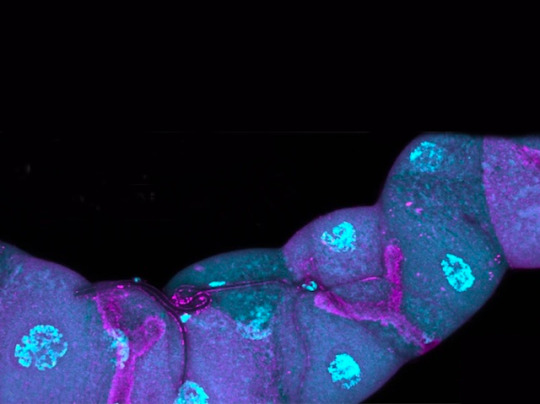
Underlying the Organ
Study of the fruit fly renal system as a model of mammalian kidney reveals links between metabolism of different cell types and physiology and ageing of the whole organ
Read the published research article here
Image from work by Jack Holcombe and Helen Weavers
School of Biochemistry, Biomedical Sciences, University of Bristol, Bristol, UK
Image originally published with a Creative Commons Attribution 4.0 International (CC BY 4.0)
Published in Nature Communications, December 2023
You can also follow BPoD on Instagram, Twitter and Facebook
6 notes
·
View notes
Note
Top 3 favorite places?
Hey!
I was thinkin about this for a bit, its been a while since I've been able to travel like I used to so this is more 3 types of places I think back on fondly for the vibes,,,
Sunny and warm days in national parks like the Redwoods
Overcast and slightly chilly days in small towns by large bodies of water; like Door County in Wisconsin or Crater Lake, Oregon, or Mackinac Island
Fascinating and unique experiences like The House on the Rock, Helen, Georgia and the Bristol Renaissance Faire
2 notes
·
View notes
Text
Court Circular | 14th March 2023
Buckingham Palace
The King held an Investiture at Buckingham Palace this morning. Her Excellency Fiamé Naomi Mata’afa MP (Prime Minister of the Independent State of Samoa) was received by His Majesty this afternoon. The King received Sir Antony Radakin (Chief of the Defence Staff). His Majesty received Lieutenant General Tyrone Urch (Chief Royal Engineer, Corps of Royal Engineers). The Rt Hon Jeremy Hunt MP (Chancellor of the Exchequer) had an audience of The King. The Queen Consort, Patron, this morning visited Elmhurst Ballet School, 249 Bristol Road, Edgbaston, Birmingham, to mark their Centenary and was received by Professor Helen Higson (Vice Lord-Lieutenant of West Midlands). Her Majesty this afternoon visited Southwater Library, Southwater Square, Southwater Way, Telford, and was received by His Majesty’s Lord-Lieutenant of Shropshire (Mrs Anna Turner).
Kensington Palace
The Prince of Wales, Joint Patron, the Royal Foundation of The Prince and Princess of Wales, this afternoon held a Meeting at Windsor Castle. The Princess of Wales, Joint Patron, the Royal Foundation of The Prince and Princess of Wales, this afternoon received Professor Eamon McCrory (Board Member, the Royal Foundation Centre for Early Childhood Advisory Group) at Windsor Castle.
St James’s Palace
The Duke of Edinburgh, Patron, The Duke of Edinburgh’s Award, this afternoon visited Balfour Beatty plc, West Service Road, Raynesway, Derby, and was received by His Majesty’s Lord-Lieutenant of Derbyshire (Mrs Elizabeth Fothergill). His Royal Highness, Patron, The Duke of Edinburgh’s Award, later visited Stonebridge City Farm, Stonebridge Road, Nottingham, and was received by His Majesty’s Lord-Lieutenant of Nottinghamshire (Sir John Peace). The Duke of Edinburgh, Patron, The Duke of Edinburgh’s Award, this evening attended a Dinner near Newark.
Kensington Palace
The Duke of Gloucester this morning visited Birdoswald Roman Fort, Gilsland, and was received by His Majesty’s Lord-Lieutenant of Cumbria (Mrs Peter Hensman). His Royal Highness today visited Cumbria Clock Company, Castle Workshop, Penrith. The Duke of Gloucester this afternoon visited Askham Hall, Askham, Cumbria, to celebrate Hospice at Home’s Twenty Fifth Anniversary. The Duchess of Gloucester, Patron, Asthma and Lung UK, this afternoon received Ms Sarah Woolnaugh (Chief Executive) and Mr Michael McKevitt (Director of Services).
#court circular#king charles iii#queen camilla#prince william prince of wales#catherine princess of wales#prince edward duke of edinburgh#prince richard duke of gloucester#birgitte duchess of gloucester#british royal family
13 notes
·
View notes
Text

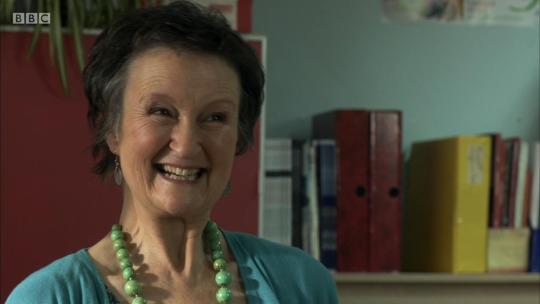
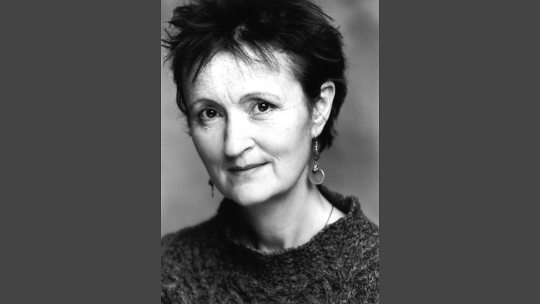




Happy Birthday Scottish actress Georgie Glen.
Georgie was born in Helensburgh on April 20th 1956 and as a child had little interest in appearing in school plays. She studied graphic design at Glasgow School of Art and moved to London in her mid-twenties to design book covers for the Thames and Hudson publishing house. Looking for other interests she joined Floodlight Council, an organization set up to bring out adult’s artistic skills and then became part of the Questors Theatre Company in Ealing, West London. Here she met the late Alan Rickman - who, like Georgie, had a background in design before treading the boards - and he encouraged her to follow her acting ambitions. As a result she enrolled at the Bristol Old Vic drama school and on graduating had her first job at the Wolsey Theatre in Ipswich.
Even then she felt, somewhat modestly, that she did not have the looks for a leading lady but ever since her television debut in 1988 she has been a reliable supporting player in virtually every type of show from sketch comedy to period drama, notably in a recurring role as doughty Sergeant Jennifer Nokes in Heartbeat and the liberal, kindly teacher head of History, Audrey in'Waterloo Road - filmed in her native Scotland.
Indeed she may be said to be one of the first ladies of character acting and though her film roles have again always been in support of bigger names she has proved herself to be a scene- stealer par excellence, as one of the more enthusiastic in Calendar girls alongside Helen Mirren and Julie Walters.
As I said earlier she has been in every type of show, to name a few we have comedy roles in Harry Enfield and Friends, Alas Smith & Jones and Little Britain, drama series and films are two many to mention them all but there are dozens, the pick of them include Taggart, of course, Peak Practice, Doctor Findlay, Mrs Brown, Shakespeare in Love, Silent Witness, and I think a lot of you will maybe “say” oh yes, when I tell you that she was the Judge in The Victim in 2019, an excellent four part series set in Scotland also starring John Hannah and Kelly McDonald. Oh and she was Denise in the brilliant Channel four show Damned!
Georgie seems as busy as ever with a new series of Call the Midwife due out soon, and the popular Children’s BBC show Hetty Feather, she has also been a regular in The Crown as Ruth Lady Fermoy in four episodes last year as well as that she has been in the BBC sitcom The Cleaner along with some great actors, Greg Davies, Helena Bonham Carter and David Mitchell. At the moment she is filming the latest episodes of Call Midwife.
15 notes
·
View notes
Text
2D - FIRST DAY OF CLASS - 9/25/23
Welcome to the 2023 FALL Semester for 2D.
An email was sent to students over the weekend with the class instructions and other information including a link to the course blog along with the class syllabus.
We will have the first class on Monday , Sept. 25 at 8am in room 5204. You will only need a notebook or sketchbook to take notes.
On the first day all students who have not done so, will create their own portfolio blog using the Tumblr platform and they will create a Threads handle to follow additional instructions during the semester.
FIRST DAY INFO and class assignments for today after our meet and greet will be as follows:
THIS NEEDS TO BE DONE THIS MORNING:
1) Create your Threads handle. 2) Find the class threads handle and follow it:
3)Create your own Tumblr handle.
4)Follow class blog ONLY nothing else.
THINGS TO KNOW FOR CLASS:
This is a mini term and it goes by pretty fast. I will give class assignments weekly . Each week as a class , students will work on developing creative ideas related to the vocabulary of art.
I will lecture at the start of class and students will have class time as well as homework if needed to complete the assignments.
Assignments will also be posted here on the class blog, in case any student is absent or late they can come to the class blog and follow directions.
I will always share the link to the class blog for your class on the day new assignments are given as I did today.
Pay attention as I can also post suggestions and information there during class time.
I will also show photos with examples and or additional instructions on Threads when needed.
All work to be done in class will be done on the Bristol pad except when otherwise noted .
Some Homework assignments are done on the sketchbook.
All work needs to be framed within the picture plane as stated during class meets.
Work completed during class will be posted on your Tumblr (portfolio page) by end of class time.
Work that was not completed during class , needs to be completed during lab hours .
A) FIRST DAY CLASS ASSIGNMENT
1) Today after class is dismissed, students will watch three short videos.
You will be looking at the work of two artist,
Franz Kline
Agnes Martin.
Throughout the semester we are going to be looking at work from different artists who work in the following genre:
Non Objective , Abstract , Modern Art.
2) As you watch the videos posted below, take notes regarding the three videos (two about Franz Kline and two from Helen Frankenthaler).
See if you can answer the questions below:
a) Pay attention to how they create art and why if that is so stated. b) What inspires them?
NEXT
B) WRITE THE FOLLOWING IN YOUR TUMBLR PAGE ,
THIS WILL BE YOUR FIRST TUMBLR POST:
Brief statement of what you understand about how FRANZ KLINE and HELEN FRANKENTHALER create art.
In regards to the work of Franz Klein comment on the issues below:
How does he divide the page ?
How is line changing from one stroke to the next?
Is it the same kind of line, thick , bold or thin and light?
Is space painted first (white), before line (black) or the reverse?
One you have finished the videos and written your statement, proceed to your sketchbook to sketch some ideas of your own version of the following:
C) Franz Kline inspired work.
Start out by playing with line as it divides the composition.
These are preliminary ideas known as sketches
How would you do it?
D) Next, using three pages in your sketchbook create THREE Franz Kline inspired compositions.
You will be using black and white paint.
E) Post review of the videos by 11pm tonight.
(This is your first tumblr blog )
F ) Sketches by tomorrow at 5 pm
LASTLY, USE THE FIRST DAY OF CLASS TO BUY CLASS MATERIALS.
ALL MATERIALS CAN BE PURCHASED AT BLICKS, MICHAELS, AND OTHER ART SUPPLY STORES NEAR YOU.
DO NOT ORDER ANYTHING ONLINE AS WE DO NOT HAVE TIME THIS SEMESTER FOR ITEMS TO ARRIVE.
ALL MATERIALS NEED TO BE ON HAND ON THE SECOND DAY OF CLASS (WEDS.)
SEE THE LIST ADDED BELOW:
For the first few weeks , the materials listed below are essential to complete class assignments.
CLASS MATERIALS:
BRISTOL PAD 100lbs. ( 9x 12 )
Sketchbook bound 8 x 11 or bigger
Black ink or Black acrylic paint (mars black)
White paint Acrylic Titanium White
Beginners acrylic paint set assortment of brushes
Painters tape (blue tape from Home Depot or Lowes)
Black assortment of sharpies different sizes (thick, thin etc )
RULER Scissors Glue sticks
MATERIALS:
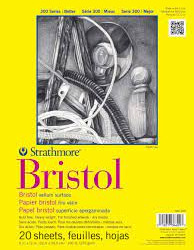
BRISTOL PAD 100 LBS (9 X 12 )
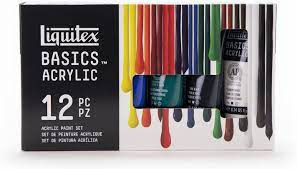
starter set acrylics ( CAN BE GOLDEN , WINSOR NEWTON BRANDS 6 or 8 colors )

Variety of brush set or something similar - different sizes

Higgins black ink

small tube of Mars ink
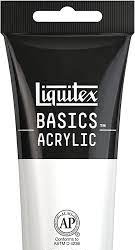
small tube of Titanium white

Note: Students who have taken drawing classes with me have most of these items.
Additional Materials list will be discussed on the first day of class.
3 notes
·
View notes
Text
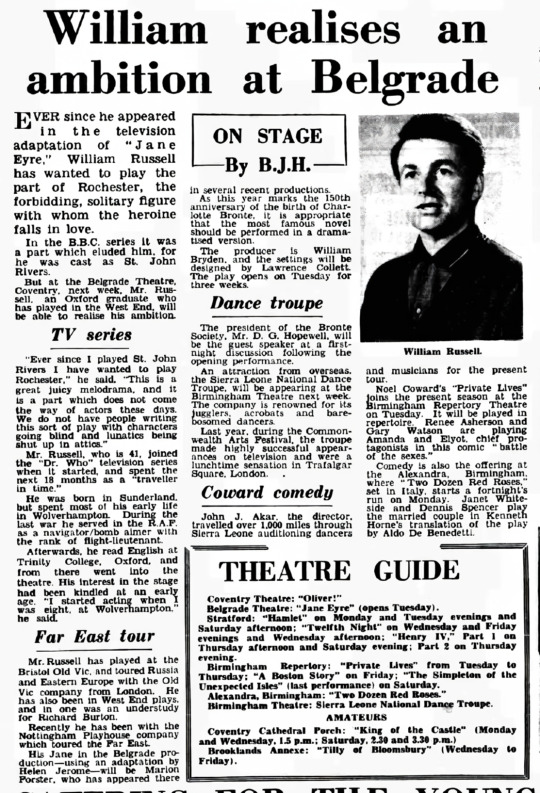
William Russell goes from St John Rivers to Mr Rochester.
He seems to be enthusiastic about, and I quote "lunatics being shut up in attics".
Coventry Evening Telegraph - Saturday 18 June 1966
Transcription:
William realises an ambition at Belgrade
Ever since he appeared in the television adaptation of "Jane Eyre", William Russell has wanted to play the part of Rochester, the forbidding, solitary figure with whom the heroine falls in love.
In the B.B.C. series it was a part which eluded him, for he was cast as St. John Rivers.
But at the Belgrade Theatre, Coventry, next week, Mr. Russell, an Oxford graduate, who has played in the West End, will be able to realise his ambition.
TV series
"Ever since I played St. John Rivers I have wanted to play Rochester," he said. "This is a great juicy melodrama, and it is a part which does not come the way of actors these days. We do not have people writing this sort of play with characters going blind and lunatics being shut up in attics."
Mr. Russell, who is 41, joined the "Dr. Who" television series when it started, and spent the next 18 months as a "traveller in time".
He was born in Sunderland, but spent most of his early life in Wolverhampton. During the last war he served in the R.A.F. as a navigator/bomb aimer with the rank of flight-lieutenant.
Afterwardd, he read English at Trinity Vollege, Oxford, and from there went into the theatre. His interest in the stage had been kindled at an early age. "I started acting when I was eight, at Wolverhampton," he said.
Far East tour
Mr. Russell has played at the Bristol Old Viv, and toured Russia and Eastern Europe with the Old Vic company from London. He has also been in West End plays, and in one was an understudy for Richard Burton.
Recently he has been with the Nottingham Playhouse company which toured the Far East.
His Jane in the Belgrade production—using an adaptation by Helen Jerome—will be Marion Forster, who has appeared there in several recent productions.
As this year marks the 150th anniversary of the birth of Charlotte Bronte, it is appropriate that the most famous novel should be performed in a dramatised version.
The producer is William Bryden, and the settings will be designed by Lawrence Collett. The play opens on Tuesday for three weeks.
4 notes
·
View notes